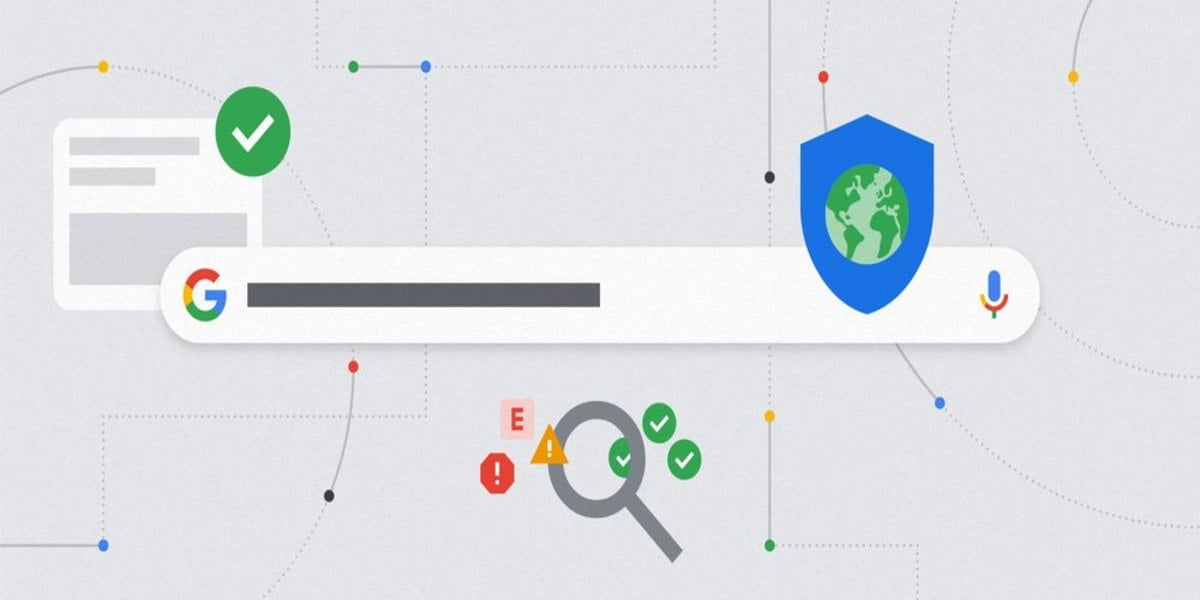Methods You Can Use To Prevent AI-Content From Being Detected by Google and Search Rankings

Introduction
First things first, content creation has become an essential part of any business strategy. With the advancements in technology, we have seen a rise in the use of Artificial Intelligence (AI) to generate content. While AI-generated content can save time and resources for businesses, it also poses a risk of being detected by Google's AI algorithms. Google uses Natural Language Processing (NLP) techniques to identify whether the content is generated by a human or machine. If detected as AI-generated, the website may face penalties that can harm its credibility and search rankings. Therefore, it is crucial for businesses to learn how to prevent Google from detecting their ai-generated content. In this blog post, we will discuss how to use NLP techniques to create ai-generated content that appears more natural and human-like while avoiding penalties from Google. By following these steps, you can ensure that your website maintains its credibility and stays ahead of the competition in the digital world.
Using Pre-Trained Models and Custom Training Data
Using pre-trained models and custom training data is crucial when it comes to creating ai-generated content that appears natural and human-like. Pre-trained models are machine learning models that have been trained on large datasets, allowing them to recognize patterns and make predictions with a high degree of accuracy. These models can be used as a starting point for content creation, providing a foundation for the AI system to build upon.
Custom training data, on the other hand, is specific to the needs of the AI system. It involves collecting and labeling data that is relevant to the task at hand, such as generating content in a particular niche or industry. This allows the AI system to learn from examples that are directly related to its intended purpose, improving its accuracy and effectiveness.
When selecting pre-trained models and custom training data for NLP-based content creation, it's important to consider factors such as the size and quality of the dataset, as well as the complexity of the model being used. Ideally, you want a model that has been trained on a large dataset with high-quality annotations, but also one that is not overly complex or difficult to work with.
To use pre-trained models effectively, you need to fine-tune them using your own custom training data. This involves retraining certain layers of the model on your own dataset so that it can better understand your specific requirements. By doing this, you can ensure that your ai-generated content is tailored specifically to your needs and matches your brand voice.
Similarly, when creating custom training data sets for NLP-based content creation, it's important to keep in mind what makes your content unique. For example, if you're creating ai-generated product descriptions for an e-commerce website, you'll want to focus on collecting data related specifically to products in your niche or industry.
Generating Content in Small Batches
Generating content in small batches is a useful technique for avoiding detection from Google when creating AI-generated content. By generating smaller amounts of content, the chances of it being flagged as machine-generated are reduced. This approach also allows for better control over the quality of the content being produced.
One of the main benefits of generating content in small batches is that it helps to avoid detection by Google's algorithms. When large amounts of AI-generated content are produced at once, it can be easier for search engines like Google to detect patterns and inconsistencies that indicate machine-generated text. By creating smaller batches of content, you can reduce the likelihood that your work will be flagged as non-human generated.
Another benefit is that generating content in small batches allows for more control over the quality of the output. It enables you to review each batch carefully before moving on to the next one, which means you can make adjustments and improvements along the way. This approach ensures that your final output is high-quality and meets your desired standards.
Tips for generating content in small batches
When using this technique, there are some tips you should keep in mind to ensure optimal results:
Start with a clear plan: Before beginning any batch, make sure you have a clear plan for what you want to achieve with each piece of content.
Use a consistent style: Consistency is key when it comes to producing high-quality output. Make sure you use a consistent style throughout each batch.
Incorporate human input: Even though you are using AI tools to generate your content, incorporating human input into each batch can help improve its quality and ensure that it reads naturally.
Monitor progress closely: Keep track of how each batch performs and make adjustments as necessary. Continuously monitoring progress will help ensure that your final output meets your desired standards.
Incorporating Human Input and Review
Incorporating human input and review into the content creation process is crucial to ensuring that ai-generated content appears more natural and human-like. While AI technology has come a long way in recent years, it still lacks the ability to understand context, tone, and intent in the same way that humans do. By incorporating human review into the content generation process, you can ensure that your content meets these standards.
One of the main benefits of incorporating human input and review is that it can improve the overall quality of your content. Human reviewers can identify errors or inconsistencies in the generated text that an AI algorithm might overlook. They can also provide feedback on how to improve the tone or style of the writing to make it more engaging for readers.
Another benefit of incorporating human input and review is that it can help you avoid potential legal issues related to copyright infringement or plagiarism. Human reviewers can identify instances where ai-generated text may have inadvertently copied content from other sources. This can help you avoid penalties from search engines like Google and maintain your credibility as a content creator.
Tips for incorporating human input and review into the content creation process
When incorporating human input and review into your content creation process, there are several tips you should keep in mind:
Set clear guidelines for your reviewers: Provide clear instructions on what they should be looking for when reviewing ai-generated text. This could include checking for grammar errors, identifying inconsistencies in tone or style, or verifying facts presented in the text.
Use multiple reviewers: To ensure consistency in your reviews, consider using multiple reviewers who can provide feedback on different aspects of your ai-generated text.
Provide feedback to your AI algorithm: Use the feedback provided by your human reviewers to adjust your AI algorithm as needed. Over time, this will help improve the quality of your ai-generated text.
Balance automation with manual review: While automation is important for generating large volumes of text quickly, it's important not to rely too heavily on AI algorithms at the expense of human review.
By following these tips, you can effectively incorporate human input and review into your ai-generated content creation process and produce high-quality content that meets both reader expectations and search engine standards.
Continuously Monitoring and Adjusting the Content Generation Process
Continuous monitoring and adjustment of the content generation process is crucial in preventing Google from detecting ai-generated content. As technology advances, so does the ability of search engines to detect artificial intelligence-generated content. Therefore, it is essential to continuously monitor and adjust the content generation process to ensure that the generated content appears natural and human-like.
The first step in continuous monitoring and adjustment is to establish a baseline for what constitutes natural and human-like language. This can be done by analyzing large amounts of high-quality content written by humans. By establishing this baseline, you can compare your ai-generated content against it and make necessary adjustments.
Another important aspect of continuous monitoring and adjustment is to keep up-to-date with the latest natural language processing techniques. The field of NLP is constantly evolving, with new models being developed all the time. By staying up-to-date with these developments, you can ensure that your ai-generated content remains undetected by Google.
How to monitor and adjust the content generation process
To monitor and adjust the content generation process, it's important to have a system in place for tracking changes over time. This can be done through regular audits of your generated content or by using automated tools that analyze your content for any anomalies.
One effective technique for adjusting the content generation process is to incorporate feedback from human reviewers. Human input can help identify areas where the generated content falls short in terms of naturalness or clarity. By incorporating this feedback into your training data, you can improve future generations of ai-generated content.
Tools and techniques for continuous monitoring and adjustment
There are several tools available that can help with continuous monitoring and adjustment of ai-generated content. One such tool is Grammarly, which uses machine learning algorithms to analyze text for grammar errors, style issues, and other writing-related problems.
Another tool that can be useful is Google Analytics, which provides insights into how users interact with your website's pages. By analyzing user behavior on your site, you can identify areas where your ai-generated content may need improvement.
Conclusion
In conclusion, creating ai-generated content that avoids detection by Google requires a combination of technical expertise and human input. By using Natural Language Processing techniques, content creators can generate text that appears more natural and human-like. However, relying solely on pre-trained models is not enough. Custom training data and continuous monitoring are necessary to ensure that the generated content remains undetected by Google's algorithms. Additionally, incorporating human input and review can help catch errors and improve the overall quality of the content. It's important to remember that while ai-generated content can be a useful tool for marketers and SEO professionals, it should never replace authentic human-created content. By following these guidelines and maintaining a focus on expertise, authoritativeness, and trustworthiness in your content creation process, you can avoid penalties from Google and maintain credibility with your audience. Thank you for reading this guide on how to prevent Google from detecting your ai-generated content!
See Also
Combining Blogging and Content Marketing for Maximum Impact
Revolutionize Your SEO Marketing with Quick Creator's AI Tools
Optimizing Your Shopify Store with SEO: A Comprehensive Guide

